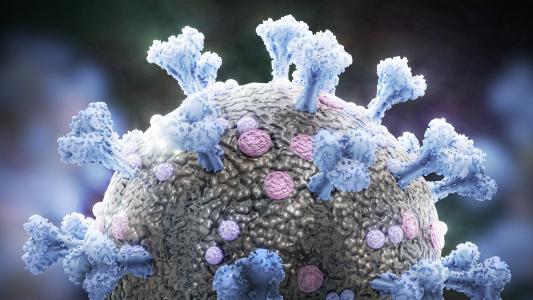Sprawling across roughly 27,000 square miles of deserts and high plateaus, the Navajo Nation is not immune to the impact of the COVID-19 pandemic. The sovereign nation’s battle with SARS-CoV-2 has seen 2,373 confirmed cases, as of May 2, and 73 deaths. Its per capita infection rate trailed only New York and New Jersey by late April.
COVID-19 has also thrown the nation’s chronic water scarcity into sharp relief: handwashing is a frontline defense, the most basic and effective form of containment, and it is being hampered by a lack of access to running water.
Roughly 30% of the nation’s residents have no access to running water. The problem stems from scarce or degraded infrastructure, combined with geographic challenges, the distance between communities, and the latent danger of uranium and arsenic pollution in the Navajo Nation’s aquifers and surface waters. Further exacerbating the issue is the presence of only one utility company, the Navajo Tribal Utility Authority, for servicing the entire nation.
“That (the lack of water access) is definitely something that is concerning, especially in times like now,” says Emma Robbins, a Diné (a Navajo term for their people) and director of the Navajo Water Project, an all-Navajo initiative that provides clean water through delivery services and long-term infrastructure projects.
The story of the pandemic on the Navajo Nation is one not just of tragedy but resilience.
But the COVID-19 pandemic has shifted the project’s focus from building up long-term water access — which would require exposing workers and families to possible infection — to providing water directly to people who need it.
“We fill up the off-grid cisterns with our water delivery trucks,” Robbins says, providing water for drinking and handwashing to roughly 300 families. Nestlé also donated 248,000 gallons of bottled water to the Navajo Nation, in partnership with the Navajo Water Project. The bottled water will be distributed by healthcare workers, fire departments, and local governments, Robbins says.
Their next step will be partnering up with the International Water, Sanitation and Hygiene Foundation to build handwashing stations throughout the Navajo Nation.
Stations are also currently being built by the Johns Hopkins Center for American Indian Health (CAIH).
“We worked with tribal partners to understand the best type of set-up … for them,” says Laura Hammitt, director of infectious disease programs at CAIH.
The design they came up with, in collaboration with members of the Navajo Nation, uses readily available materials that can be easily built and distributed. Right now, handwashing stations are being directed to those families without water access, and those who have confirmed cases of COVID-19 get priority, says Taylor Billey, a research program assistant at CAIH and member of the Navajo Nation.
Community health representatives and public health nurses are “really able to identify those families,” Billey says, since they work directly with them.
Handwashing is a frontline defense, the most basic and effective form of containment.
When a family has been identified, a team from CAIH pre-assembles a handwashing station and either delivers it to their home or arranges to have it picked up — contact-free, of course. Once installed, families refill the stations with whatever methods of getting water they used before, or perhaps with deliveries from the Navajo Water Project.
COVID-19, by targeting the elderly, carries a deeper psychological impact for the Navajo. Like many indigenous peoples, elders occupy a special place in Navajo society. And a death is not only the loss of a loved one — it can also mean a loss of culture. That threat is an existential one.
When Emma Robbins’ grandfather died last year, his passing marked a loss for the whole community. “We just lost a huge chunk of culture there,” she says. The danger feels extra real now. “Now with high risk people, which are elderly, there is a possibility of losing that culture.”
But deep ties between elders, children, family, and community cut both ways for the Navajo Nation’s COVID-19 response. Many Diné live in multigenerational households and hogans. While this means increased exposure, it also means that high-risk cohorts often have plenty of friends and family to assist them.
“For our tribal communities, family goes a long way,” Billey says. “That’s not just your immediate family, but our elders and cousins and aunts and uncles.”
Practical help can mean organizing pickups and deliveries of food and supplies: the Navajo Nation is shockingly bereft of grocery stores, necessitating long trips to crowded stores with many empty shelves. It can also mean providing health information to those without internet (or even electricity), as well as translating it from English to Navajo.
“We have a lot of community members who care deeply about our area, about the Navajo Nation, our creation stories, our traditions,” says Chantel Yazzie, a social media and marketing specialist with the To’Nanees’Dizi local government. “When it comes to community, everyone pitches in where it’s needed or where they can.”
Food donations are distributed, and Navajo craftsmanship is being applied to making masks; Yazzie’s family is sewing them for elders in the community.
The Navajo Nation has tribal sovereignty, which has been key in their response to the pandemic. The ability to pass their own policies — such as a strict curfew spanning the weekend — allows them to rapidly respond to local conditions, which might be lacking if they had to rely on state or federal governments.
“We take our sovereignty very seriously,” Robbins says. “Those are really strict measures, but yes, we’re able to do them, and it is effective.”
Despite being hit hard by COVID-19 thus far, the story of the pandemic on the Navajo Nation is one not just of tragedy but resilience.
“We’re doing the best we can with the resources that we have,” Yazzie says. “And if those resources aren’t there, our community takes it upon themselves to make sure that we get it.”
Editor’s note: This article was updated to correct Chantel Yazzie’s and Anthony Redhouse’s last names
We’d love to hear from you! If you have a comment about this article or if you have a tip for a future Freethink story, please email us at [email protected]






